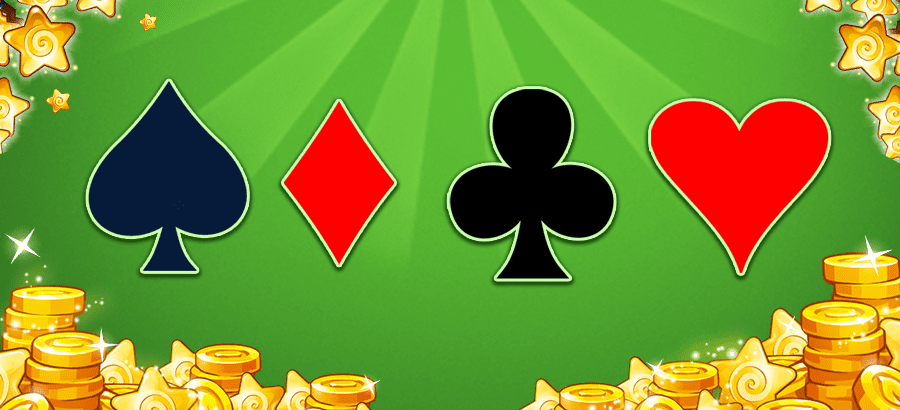You might be wondering why modern decks of cards are made up of diamonds, clubs, hearts, and spades. 4 suits in cards has become the standard presentation, both online and with physical decks. But why is that the case?
Where Did Card Suits Come From?
Originally, suits had nothing to do with cards at all. They were first used in the Chinese game of Tin Kau, a gambling derivative played with either dice or dominoes. Their suits were based on the regional money system back in the 1100s.
But the idea of card suits sprung directly from these early dice games. The concept was brilliant, because card suits introduced a new level of complexity to games that might otherwise be far too easy. Stacking, matching, or comparing two cards based on numerical order can get boring. But introduce a system that has rules based on how suits interact, and it’s an entirely new dimension.
So why do we have spades, clubs, diamonds, and hearts as our 4 suits in cards? For that, you can thank the French. In the late 1400s, French playing cards standardized on carreaux (diamonds), trèfles (clubs), piques (spades), and cœurs (hearts).
The particular importance of each playing card suit depended on the game being played. Sometimes a suit was chosen as trump in a point bidding game, such as bridge. Oftentimes, suits were used in solitaire games to make winning far more skill based by limiting what cards could be played or removed based on suit.
As to each card suits meaning, we can briefly go through what historians think of each suit. But for a more poetic overview, check out Sting’s song ‘Shape of My Heart’. It puts a beautiful spin on the entire subject.
Diamonds
The Germans used bells instead of diamonds. Some historians think this is because falconry was a rich person’s sport in the region, and falcons had bells attached to their jesses.
Eventually this early symbolism evolved. Walking up a French boulevard in the 1400s, one could see diamond shaped paving stones being used when approaching fancy churches. They were also used on the gravesites of the rich and powerful.
So it’s very likely that a diamond card suit’s symbolism is tied to wealth or riches. This also makes sense thematically, with diamonds being an expensive stone.
Spades
The Germans went the exact opposite route. Perhaps attempting to represent a more peaceful image, their spades became beautiful green leaves. So the face cards would have names such as ‘The Leaf King’.
The French decided on a more military-oriented representation for their cards. A well crafted blade didn’t show up in the hands of just anyone. For the most part, trained soldiers and nobility are the ones who could get their hands on such fine weaponry.
A spade card suit’s symbolism refers to any military blade – swords and pikes. The French name for the suit is pique after all, so it should come as no great surprise that spades are weapons of war.
Clubs
Still staying with a forest oriented theme, the Germans decided on acorns as a more peaceful representation of their card suit.
Of course the French knew that if you wanted to start a revolution against people who had diamonds and swords, the common folks couldn’t afford something as fancy as a crafted blade. Their weapon of choice was a club.
So a club card suit’s symbolism represents the everyman, the salt of the Earth. A peasant’s club might not be as powerful as a nobleman’s sword, but there are a lot more of them in an angry mob!
Hearts
But the French and the Germans ended up agreeing on a deeper interpretation. Much like a chalice, a heart is a vessel that’s broader at the top than the bottom. It seemed like the perfect fit for this suit.
A heart card suit’s symbolism refers to the more spiritual side of life. It encompasses concepts like priesthood, love, and making vows.
Modern websites such as Solitaire Social use the French suit system, as do most casinos and home games.
Card Suit Order
There is no standard card suit order, because suits are used differently depending on the game being played.
However, some popular games do have suit rankings that can impact the score. For example, bridge’s bidding system has a card suit order of spades, hearts, diamonds, and then clubs.
Some forms of solitaire are built around suits. The goal of classic solitaire is to build four suited piles from Ace to King, for example. The most difficult version of spider solitaire only allows you to move groups of cards if they’re all the same suit.
That having been said, there’s still a wide range of decks available that change the imagery and style of your solitaire game, in particular on the face cards. Try them out, and settle on the imagery that you like best.

